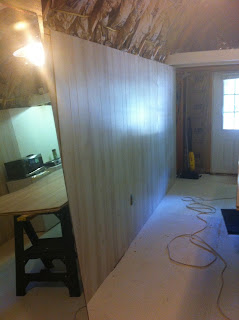Minimalism?
As
a lifestyle?
It
is quite the inviting and novel idea … one that seems to be
surrounded by a lot of attractive romanticism … one that is easy to
initially embrace. It takes a lot of love to keep the love-fire hot after that first kiss.
We'll
not be quick to say that we are minimalists in the strictest sense of
the word. Close. But not yet. It would be truer to say that we are becoming
minimalists. None of us go from living a grinding hamster wheel lifestyle to
living a successful minimalist lifestyle in one leap. It's a process
that involves a lot of careful, thought out, calculated steps
interspersed with a few good jumps here and there.
It
is also a lifestyle that is best approached with a diversified
self-reliant skills-set and the basic tools to perform those skills day-in and day-out.
Without the skills ... we are always relying on someone else. Without
the tools … we are always borrowing from someone else. Investing the
time to learn how to do things for ourselves, and procuring the tools
to do those things for ourselves, is never an unwise investment of
time and financial resources.
 None
of us, at least in my opinion, will ever be totally self-sufficient.
All of us, however, can be
continually becoming more and more self-reliant
through the development of skills and the acquirement of the basic
tools to accomplish those skills. Especially in the areas of basic
home repair and in growing and preserving food crops.
None
of us, at least in my opinion, will ever be totally self-sufficient.
All of us, however, can be
continually becoming more and more self-reliant
through the development of skills and the acquirement of the basic
tools to accomplish those skills. Especially in the areas of basic
home repair and in growing and preserving food crops.
We
have, over the years of our lives, learned a lot about cutting back,
getting by on less, and living within our means. We have also taken
that other road … the one that the vast majority of folks are on …
the one that involves the vicious debt-cycle
that turns people into tired, quiet and
desperate mules
pulling wagons that never empty and become easily overloaded. The
object of life, once tightly harnessed to the debt-cycle wagon,
becomes little more than a debt-paying trudge to keep the creditors
satisfied.
Creditors
care not one iota that we hate trudging. Our trudging, though it
exhausts us and wears us out prematurely, is what keeps their
institutional systems alive. Too often the things we trudge for are
worn out before the trudging is done, only to be replaced with more
things that require our signature promises to continue trudging. Too
late we discover the truth that “the cost of a thing is the
amount of what I will call life which is required to be exchanged for
it, (Whatever it
is.) immediately or in the long run.” Henry David
Thoreau.
I
do not remember when I read Walden the first time. I am, it seems
only appropriate considering the stage we have entered into in our
downsizing adventure, reading it again for what must be the fourth
time.
This
time, now that our library of cherished printed books has been
seriously reduced in the downsizing, I am reading it as an E-Book.
This is a major adjustment for a dinosaur that prefers a book in
hand. I am adjusting.
GRRRRRR!
I can see us becoming frequent
visitors at the public library again in the not so distant future.
There
is a lot in that book by Thoreau.
There are only a couple of
things people do with Walden once they've read it. (1) They begin
striving toward a lifestyle that, as much as possible, emulates the
philosophies and principles contained in it. Or, (2) they summarily
dismiss it as the poppycock of a social misfit.
There's
something about social misfits like Thoreau that believe(d) a simple and independent mind does not toil at the bidding of any prince. (Prince? Politician? Potentate?) We happen to feel
comfortable around social misfits and honestly prefer their company.




























